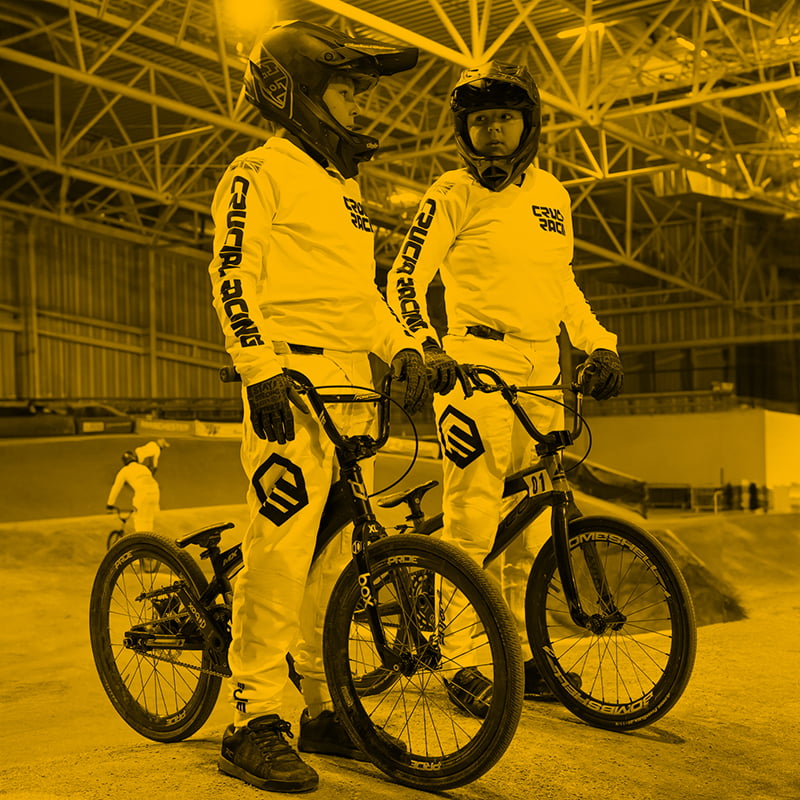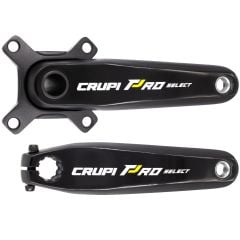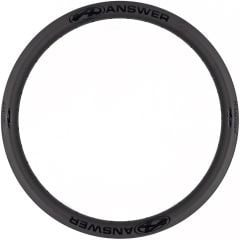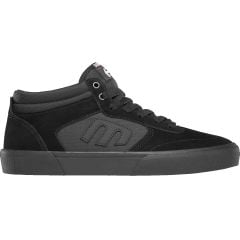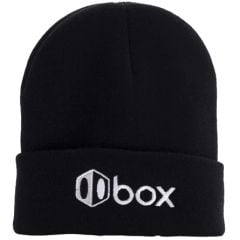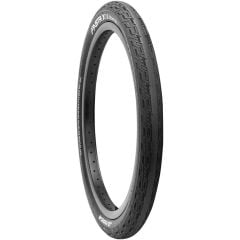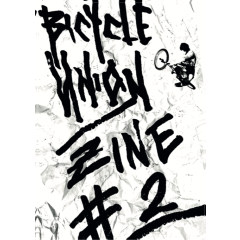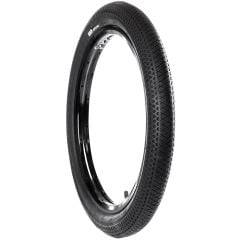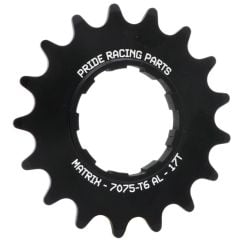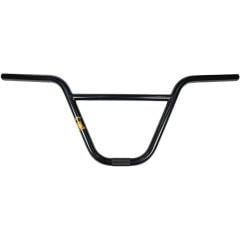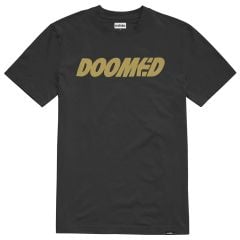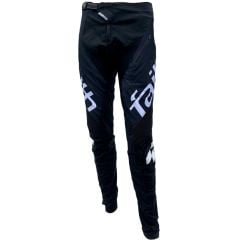Meybo Patron Pro XXL 2025 BMX Race Bike - Pre-Order
PLEASE NOTE: THIS IS A PRE-ORDER ITEM. DUE DATE: MARCH... Read More
PLEASE NOTE: THIS IS A PRE-ORDER ITEM. DUE DATE: MARCH
The Meybo Patron is a high-end, world cup-ready race bike, engineered for serious riders aiming to dominate the track.
Packed with premium features like carbon rims, high-performance components, and a carbon fork, this bike is built for speed and precision.
With the Patron, you're not just competing—you're racing for the win.
Features:
- 6061 Alloy Hydroformed Tubing
- Direct Mount Disc Brake
- Meybo Solid Chainstay With Fixed 15mm Rear Drop Outs
- Ensure You Always The Same Chainstay Length Whatever Gear You Run
- Easy, Fast And Straight Mounting Of Your Rear Wheel
- Meybo Chain Tensioner System
- 7005 CNC 15mm Rear Axle
Specification:
- Frame: Meybo HSX Patron Frame Alloy 6061 Pro 22
- Fork: SD Pro Tapered 5 Carbon Fork V2 CNC steerer 20" with 20MM dropouts
- Headset: FSA Sealed Full Integrated Tapered Headset
- Handlebar: SD cr-mo 8" pro Handlebar
- Stem: SD CNC Stem 11/8” 50mm
- Grips: SD 130 mm lock on grips
- Brake Lever: Shimano MT501 Hydraulic Lever
- Caliper: Shimano MT501 Hydraulic Caliper
- Front Hub: SD Ace Pro Hub 36H 20mm through axle
- Rear Hub: Sd Ace Pro Cassette HSX Hub 15Mm Through Axle 36H Sealed Bearing 180 Clicks
- Spokes: Spokes Black
- Nipples: Nipples Alloy Black
- Front Rim: SD M58 V2 20x 1.75 Carbon Rim 25mm
- Rear Rim: SD M58 V2 20x 1.75 Carbon Rim 25mm
- Front Tire: Tioga Fastr-X 20x 1.75 Wired
- Rear Tire: Tioga Fastr-X 20x 1.75 Wired
- Seat: Box Two pro seat 27,2 black
- Seat Clamp: SD qr clamb 31,8 black
- Crankset: SD Pro Hollow crankset 4hole, outboard bearings 175mm
- Bracket: SD Bottom Bracket Bb30 Conversion To 24Mm Spindle
- Pedals: Wellgo LU-313 platform
- Front Sprocket: SD CNC 6061 Chainring V2 4 Hole 44T Black
- Rear Sprocket: Cog 16T
- Chainring Bolts: Black Steel
- Chain: KMC Z1eHX 3/32 Silver
- Chain Tensioners: Meybo HSX Chain Tensioner Black
- Weight: 8.91kg
Geometry:
- Top Tube: 22”
- Down Tube: 22.55”
- Chainstay: 15.20”
- Head Tube Angle: 74
- Seat Post Angle: 71.0
- Head Tube Size: 1-1/8 – 1.5”
- Seat Post Size: 27.2mm
- Dropout: 15mm
- Bracket: BB30
- Disc Brake Only: Postmount
- Colour: Red/Black/White
- Lead Time: 0
New Rider?
Choosing the correct bike for your discipline is extremely important, and sometimes for those new to the sport it can be difficult to know or decide, so we’ve broken down the main differences to help you make a decision.
Freestyle bikes are designed for the skatepark, the streets or the trails. They are constructed from strong, hard wearing materials and usually feature Steel or Chromoly frames. This means that the bike can stand up to a certain amount of impacts and hard landings, but remember no bike is indestructible. For riders looking to learn tricks and stunts, then a freestyle bike is the correct choice.
Race bikes are designed specifically with the track in mind, they are nimble lightweight machines for putting down quick lap times. Typically, they are constructed from lightweight materials like aluminium and carbon fibre to keep the weight down and the rider at the front of the pack. These bikes are strong enough for smooth landings on race and pump tracks but will not take the abuse that a freestyle bike would in concrete skateparks. If you’re looking to set fast lap times or begin your competitive career on the track, a race bike is the right choice.
Choosing the correct size BMX bike is very important, bikes that are too large will be cumbersome and hard to manoeuvre and bikes that are too small can feel cramped and hard to keep under control.
Youth freestyle bikes are sized depending on the diameter of the wheel staring at 12” all the way through to 18”, at a 20” wheel the bike is considered an adult size. Adult freestyle bikes are sized on top tube length, a 18.5” top tube is extra small for younger teenagers who have just moved up to an adult bike, a 20” top tube is small, 20.5” a medium and anything over a 21” is considered large.
Race bikes feature 20-inch wheels on all models, but the components and frame are sized dependent on age and height. Youth race bikes start from a Micro size for very young riders and offer a range of sizes through to expert XL. Pro size and upwards are considered adult bikes and are usually offered up to a Pro XXXL or larger for very tall riders.
We recommend consulting our height charts from the link below to help you choose your perfect sized bike:
Choosing the right level bike for your riding ability is important. Components that are not suitable for your level of riding can wear or fail much sooner than expected. Although BMX bikes can look very similar, under the surface components and materials used can vary greatly.
All our bikes are cherry picked from the very best BMX specialist brands, and all our bikes are designed specifically for use at the skatepark or on the track.
FREESTYLE BIKES
For first time riders new to the sport our entry level bikes, priced from £200-£400, are perfect, most of these are made from high tensile steel which means they are still relatively strong, but can be slightly heavier than higher end models. You might find you’ll want to upgrade to something lighter sooner than you’d think. If you are planning on using the bike in rain or bad weather, we do strongly advise choosing a model with fully sealed bearings all round.
If you are already confident on a bike and have some experience in skateparks or performing tricks and jumps then we would recommend choosing a mid-range bike, priced from £400 to £700, with a full Chromoly frame, fork, and bars. This will be lighter and stronger than an entry level model.
For an experienced person that is already capable of performing most tricks and has previously owned BMX bikes then a high-end complete bike, or full custom would be suggested to meet the demands of this rider, these bikes are priced from £700 plus.
RACE BIKES
Our range of entry level race bikes are perfect for first time racers, usually priced between £200 and £400 most of these are constructed of heavier steel rather than aluminium. These are great to get a feel for the sport but would not be able to keep up in a competitive environment.
Our mid-range race bikes are the perfect for riders who are beginning their path to competitive racing. Priced between £400 and £800 these are not quite the high-end steeds you see at national level races, but they all feature lightweight aluminium frames and are designed specifically with the racetrack in mind.
For experienced riders who are already racing confidently at a competitive level we offer a small range of high-end complete bikes. These are usually priced between £800 and £1500 and feature many aftermarket components like carbon forks, disc brakes and folding tyres. However, at this level we highly recommend building a full custom bike, usually costing between £1500 and £3000 all components can be chosen specifically with the rider in mind. For help on building a custom bike give us a call or drop us an email!
One of our most frequently asked questions in freestyle is, which rear hub do I want, a freecoaster or a cassette? Most experienced riders know their preference, but if you’re new to the sport it can be difficult to know which choice to make.
The main difference between the two is the way the bike performs when going backwards. A traditional cassette hub requires the rider to pedal in time with the rotation of the wheel while travelling backwards, while a freecoaster allows the rider to travel backwards while keeping the pedals level in the same position as riding forwards.
Although this may seem like a brilliant feature, it does come at a price! Freecoaster hubs feature a “Slack” before engagement while pedalling forward. This means that you can turn the crank a set amount (Usually an adjustable amount) before the drivetrain engages. This is referred to as the “Slack”, when riding backwards you must keep your feet positioned within the slack, if your pedals rotate too much the drivetrain will engage and your pedals will start to rotate. The smaller the slack, the harder it is to keep your pedal positioned within it while riding backwards. This means that certain tricks are harder to perform, especially those that rely on pedal pressure, for example Tire Taps.
